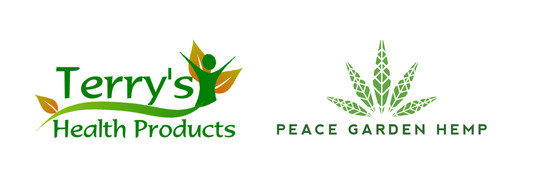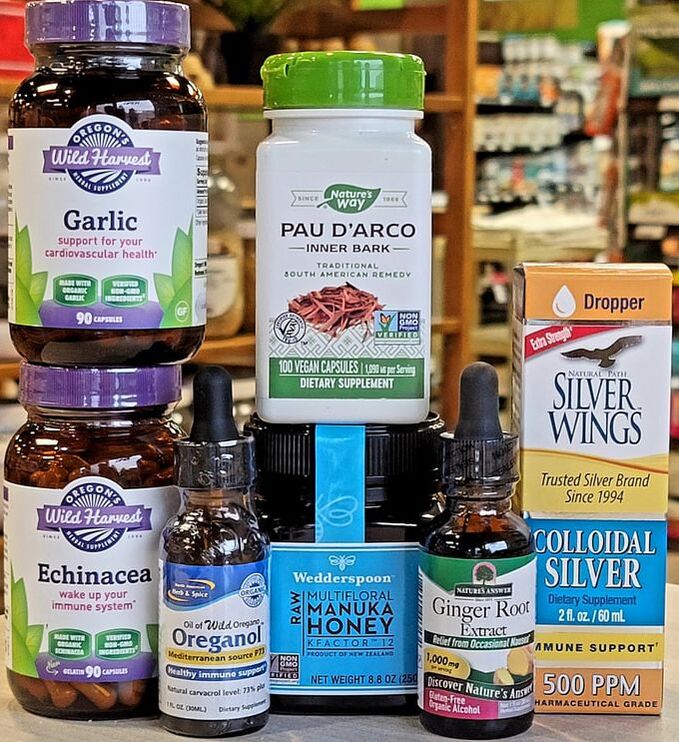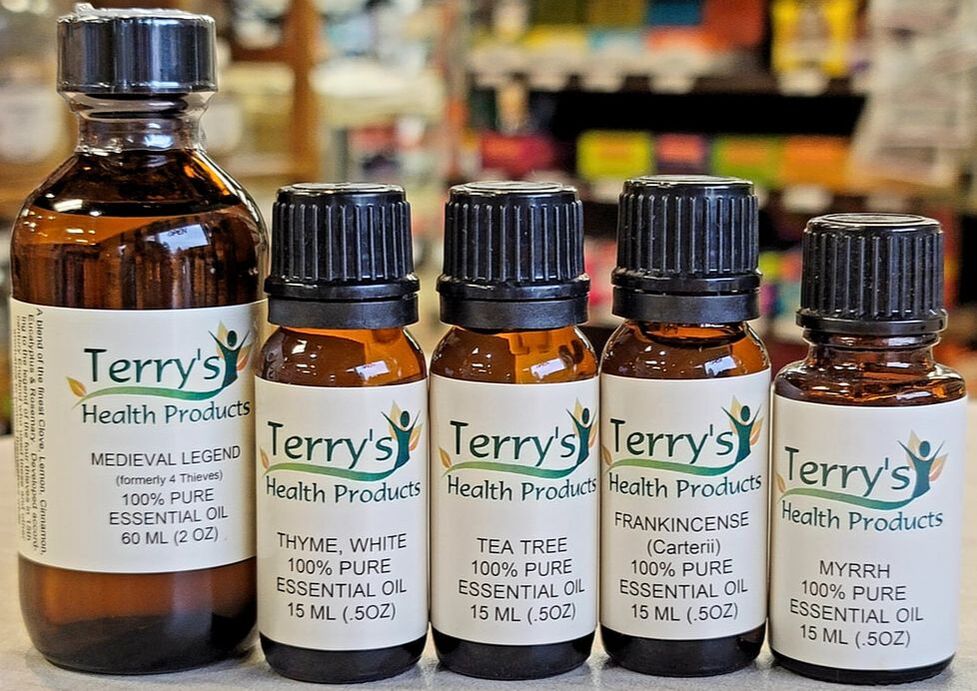|
Antibiotics can be necessary.... Respiratory infections. Sinus infections. Cuts and scrapes. Acne. UTI. SIBO. And more. But did you know there are plants and minerals with natural antibacterial properties? This blog will teach you about different options you have to disinfect and prevent infection, naturally! This blog is not meant to replace medical advice from your doctor, and we recommend following your doctor's advice. These are our most popular antibacterial options, because they're safe, effective, and easy. Most of these antibacterial options can be used internally or externally, either taken orally or used on your skin. Let's explore what they do! Echinacea You may have heard that echinacea tea is a good remedy for colds and flus. It is actually traditionally used for treating infections. In fact, it was used in the 18th and 19th centuries as a "cure-all" for infections, and its use only declined due to the creation of pharmaceutical antibiotics. Many studies have demonstrated echinacea's effectiveness to reduce infections, reduce the severity of colds, and strengthen the body against disease. Due to how potent it is, it is not recommended to take echinacea for longer than symptoms persist, or up to 10 days. Echinacea Information | Mount Sinai - New York Garlic It's common knowledge that garlic will kill anything that ales you, right? Did your parents make you eat whole cloves of garlic when you were sick, or at least feed you garlic soup? While consuming garlic has many many health benefits, the trouble is that studies have not verified that garlic alone is effective as antibiotic, but garlic has been well studied to help reduce cholesterol and blood pressure. Studies have shown that it may help kill bacteria, but it's actually most effective as a booster to your antibiotic. Taking garlic along with other antibiotics reduces antibiotic resistance so the antibiotics can be more effective. Fresh Garlic Extract Enhances the Antimicrobial Activities of Antibiotics on Resistant Strains in Vitro (nih.gov) Garlic | NCCIH (nih.gov) Oregano Oregano is gaining popularity quickly, because it works! It has also been clinically studied against many specific strains of bacteria, including the tough ones like MRSA and E. Coli, with impressive results (and without the side effects of broad-spectrum pharmaceutical antibiotics.) In fact, it is so reliable that our military has used it on wounds to kill antibiotic resistant bacteria. If you will only try one natural herb as an antibiotic for any need in your body, try oregano. This is a case in which there is so much to say about how well oregano works, and Dr. Axe already has an excellent blog with links to many studies: Oregano Oil Benefits, Uses, Dosage, Side Effects, Interactions - Dr. Axe (draxe.com) Manuka Honey This is a delicious choice, and also one of the best choices for wound care. Manuka honey has the ability to break biofilms, which are like shields that bacteria and fungi create to resist being killed. This is critical, because not all antibiotics are able to penetrate biofilms and kill the bacteria they are meant to. Not all honey is the same, because it depends on the pollens bees use to make it. Manuka honey is only made in New Zealand and Australia. Bees gather pollen from their native tea trees, scientifically known as the leptospermum scoparium bush. Most honey has a very high concentration of natural hydrogen peroxide, giving honey an antibacterial effect. Manuka honey, however, has methylglyoxal, or MGO. MGO is a potent antibiotic that does not loose its effectiveness when in contact with bodily fluid, unlike the hydrogen peroxide in honey. The understanding we have is the the higher the concentration of MGO, the more potent it is against bacteria, therefore a rating system was created to label how much MGO is in a bottle of Manuka honey. It's called a UMF rating, and studies have shown that a UMF of 10+ is necessary to have antibacterial benefits. Antibacterial activity of Manuka honey and its components: An overview (nih.gov) Pau D'Arco This is one you might be less familiar with. It's best known for its antifungal properties, and is commonly used to fight a candida (yeast) infection. It's a bark from a tree that grows in many South American countries, traditionally used by Native Americans to create bows. They observed that the trees, alive or dead, never developed mold or fungus. They used it medicinally for a wide range of benefits, including to treat infections. It has been observed to starve bacteria and fungus of oxygen and energy, inhibiting their growth. Studies have been conducted on animals, but not in humans. More studies are needed to understand this versatile wood, but centuries of use have observed its benefits. Pau D’Arco: Uses, Benefits, Side Effects, and Dosage (healthline.com) Ginger Ginger is best known for calming nausea and reducing motion sickness, but it has many more incredible benefits - its antibacterial properties is not one of its better known benefits! Studies have shown it is very effective against several types of bacteria prone to antibiotic resistance, but it has shown effectiveness against a broad spectrum of bacteria. Studies showed that ginger has the best results in the inhibition against Salmonella typhi, but also very strong inhibitory properties against Candida overgrowth. Assessment of antimicrobial potential of 10% ginger extract against Streptococcus mutans, Candida albicans, and Enterococcus faecalis: an in vitro study - PubMed (nih.gov) Active ingredients of ginger as potential candidates in the prevention and treatment of diseases via modulation of biological activities (nih.gov) Colloidal Silver Colloidal silver is not a traditional antibiotic, but it is an old traditional remedy used for centuries. It works in 3 unique ways: 1. It is able to puncture the bacterial cell wall. 2. It can enter the bacteria and cause an oxidative reaction, preventing it from functioning well as an organism. 3. Silver can inhibit the bacteria from reproducing. Because silver has the ability to prevent the growth of bacteria, it is used in many medical devices, oral care, wound care, and even sanitary pads for mensuration. The use of silver is controversial in both medical use and agricultural use. Some evidence shows it should only be used in moderation due to long-term side effects. It could have the potential to disrupt our soil ecosystems and our body's inner eco-systems if it kills too much bacteria when over used. More studies are needed to understand the effects of long-term use, but we do know it is an effective antibiotic. Antimicrobial Silver in Medicinal and Consumer Applications: A Patent Review of the Past Decade (2007–2017) (nih.gov) Essential oils concentrate the properties of plants, and therefore they will offer the anti-bacterial benefits of their source. Our essential oils are not certified safe for ingesting, but they are excellent for diffusing and treating skin with. Thyme, tea tree, frankincense, and myrrh have all been studied for their ability to disinfect and clean wounds. Stay tuned for future posts with essential oil recipes using these individual oils, but come talk to us in the store and we will happily teach you how to use these oils properly! Medieval Legend, however, is a powerful blend of oils famous for its disinfectant properties. It is easy! Fill a 2 ounce dark glass spray bottle with non-alcoholic witch hazel and 30 drops of Medieval Legend. Shake it before spraying. This blend is gentle on wounds and aids in the healing process. Witch hazel is an astringent that cleans the skin, reduces itching and swelling, and evens skin tone. It is the perfect base to gently care for your skin without burning or stinging. Also, Medieval Legend smells warming, earthy, and grounding. It is a pleasure to breathe in because it smells so comforting! Author: Sarah Langer
0 Comments
Leave a Reply. |
AuthorThe Health Squad is here to help guide you through this crazy chemical and toxin ridden world. We will provide tips to living a more natural lifestyle. Archives
January 2023
Categories |



 RSS Feed
RSS Feed